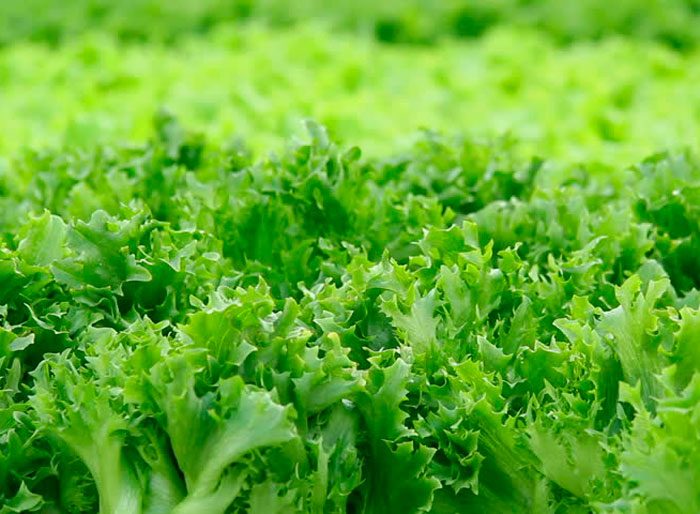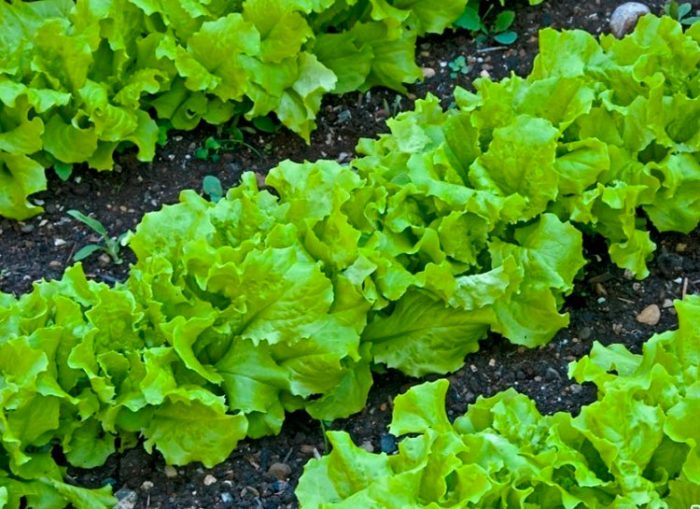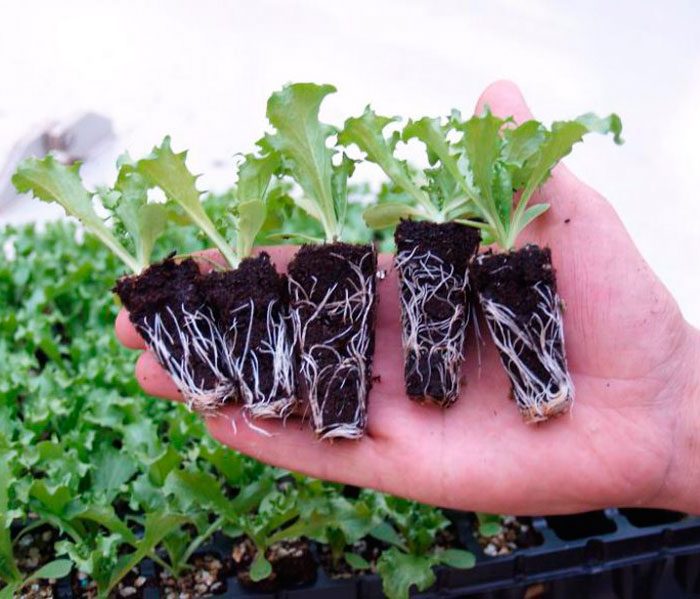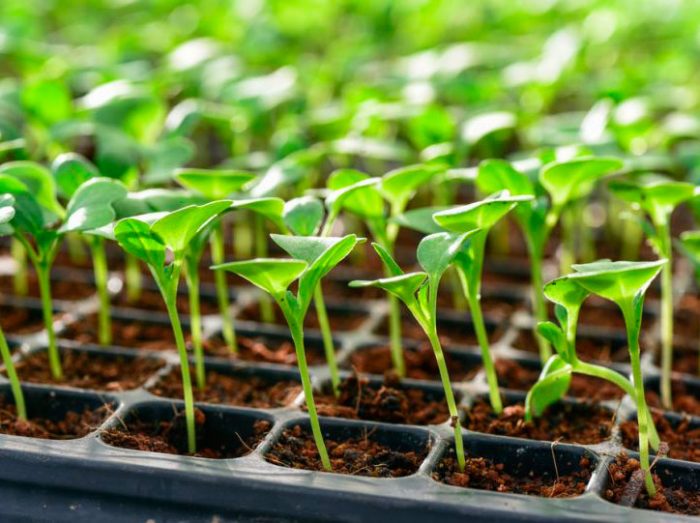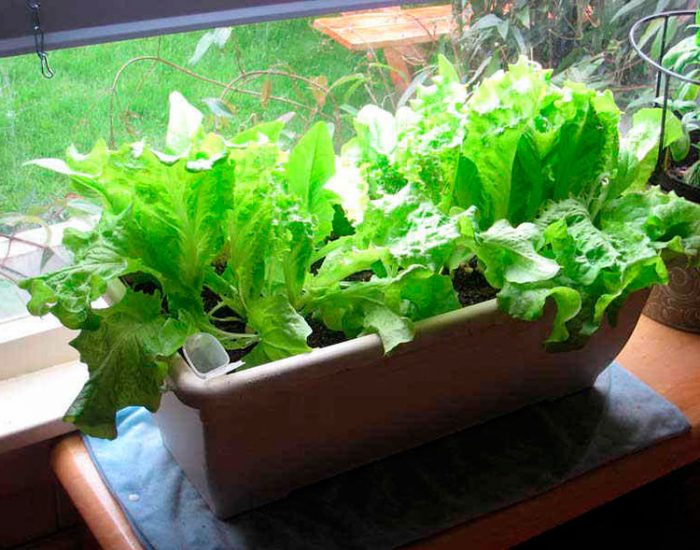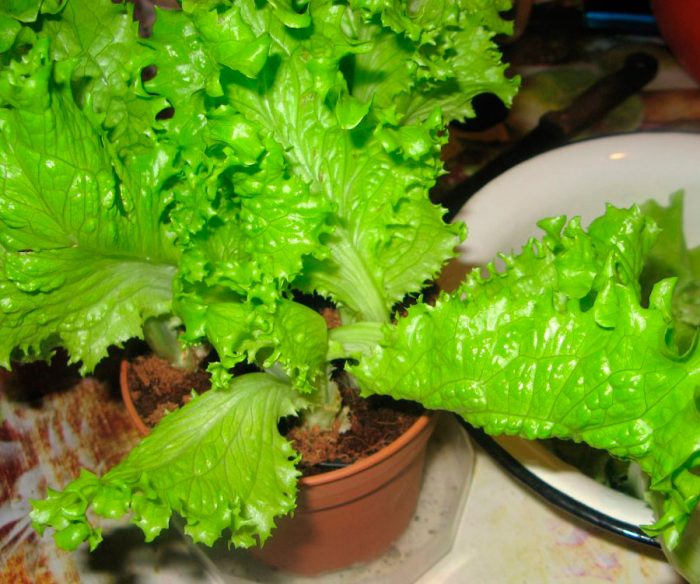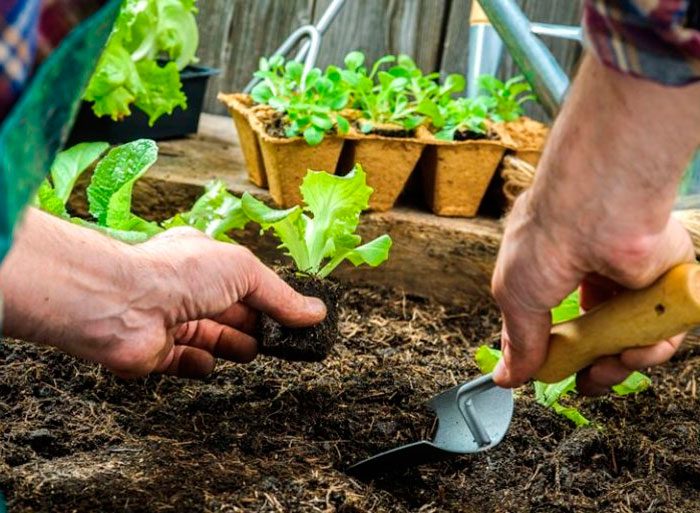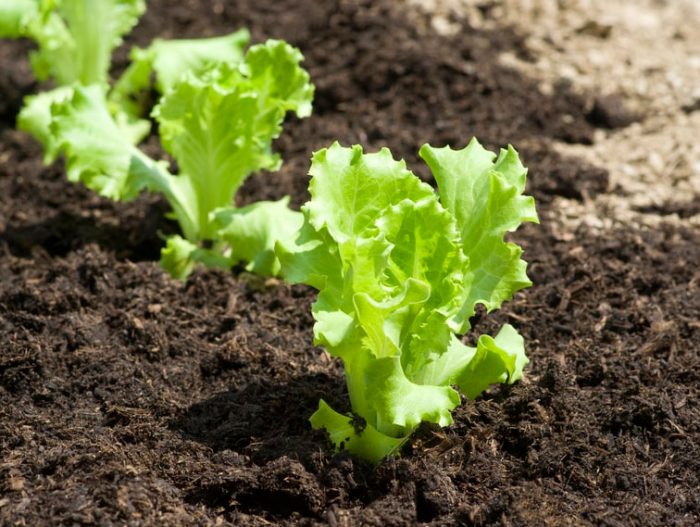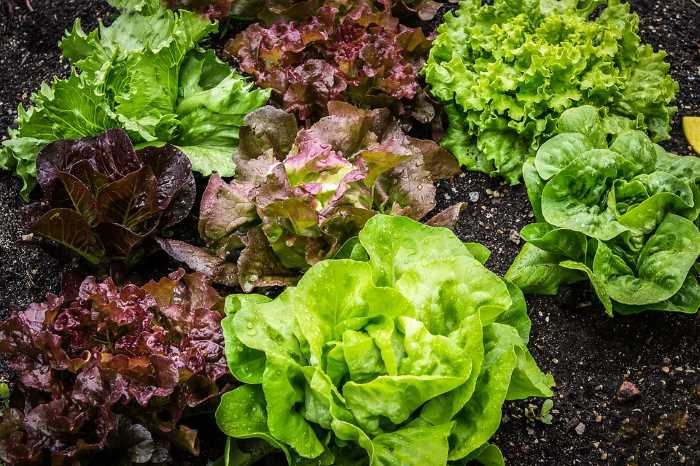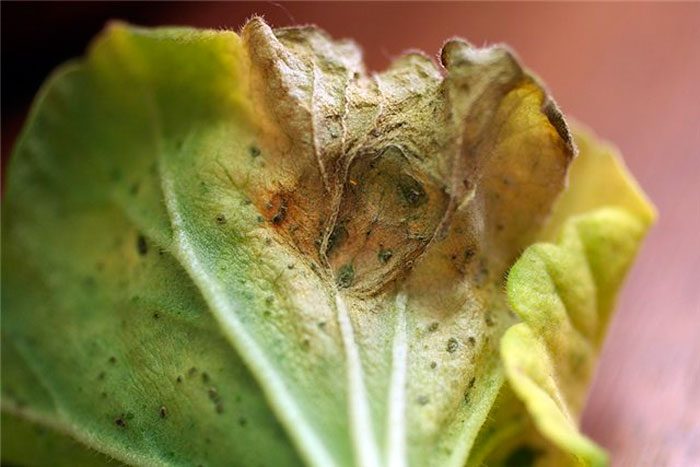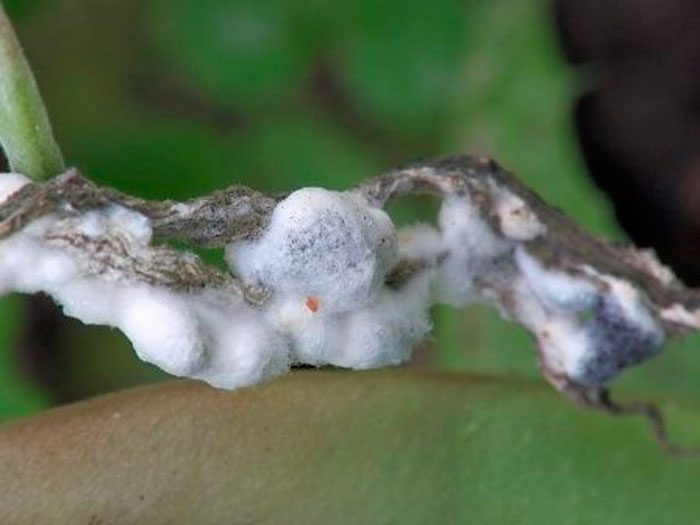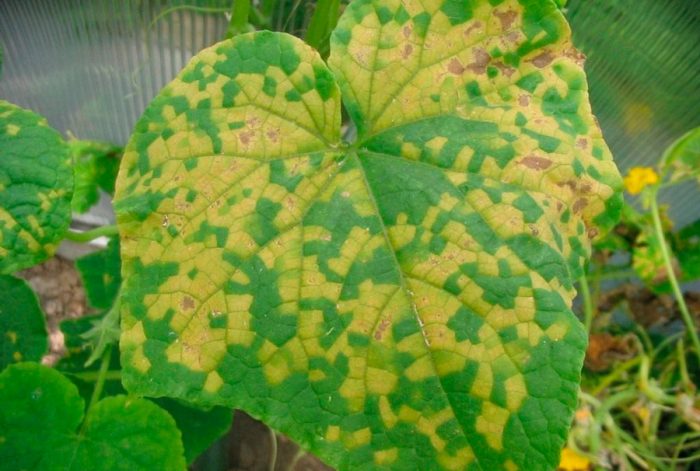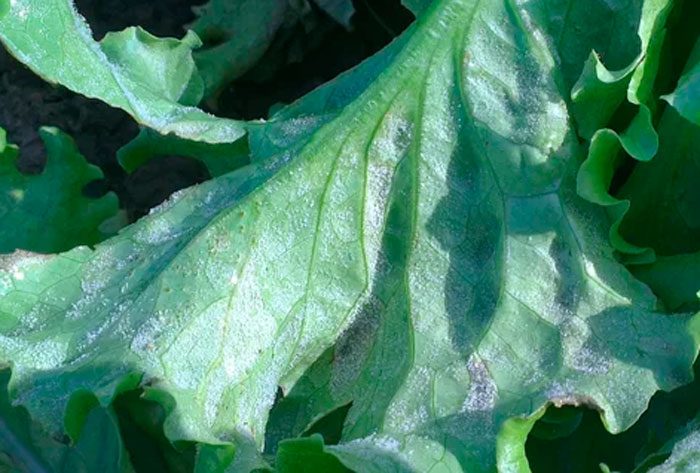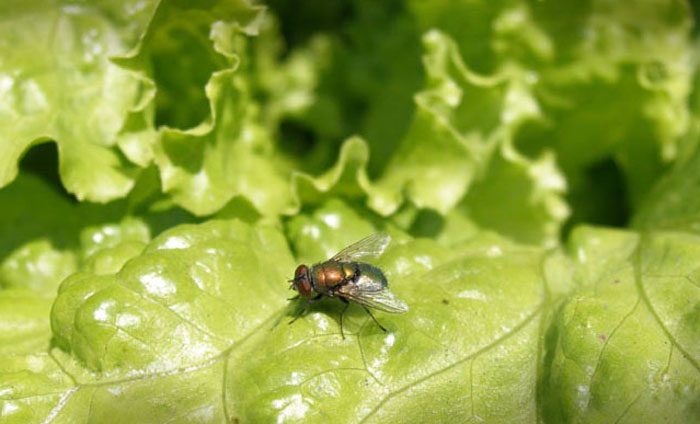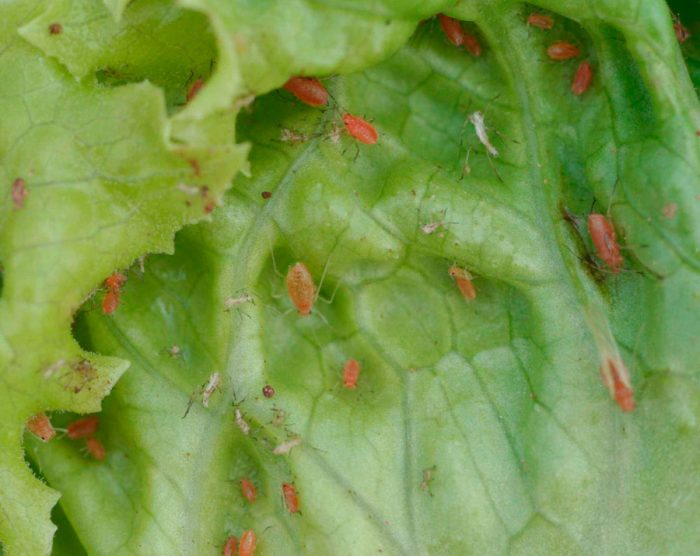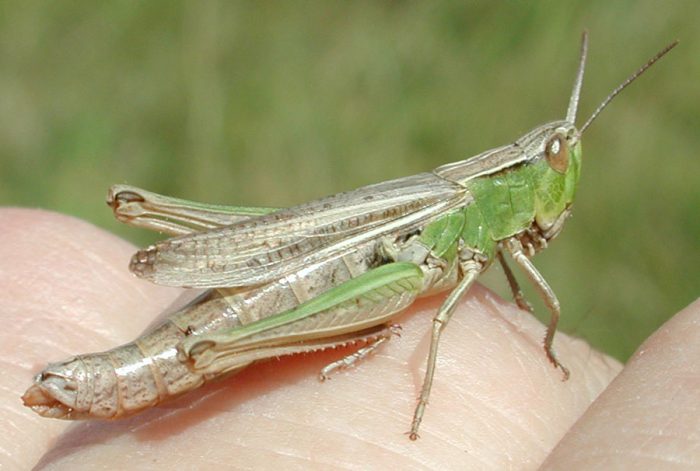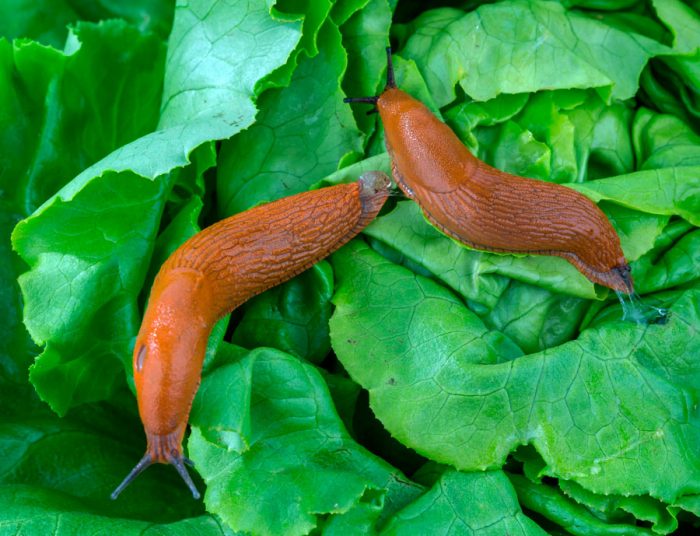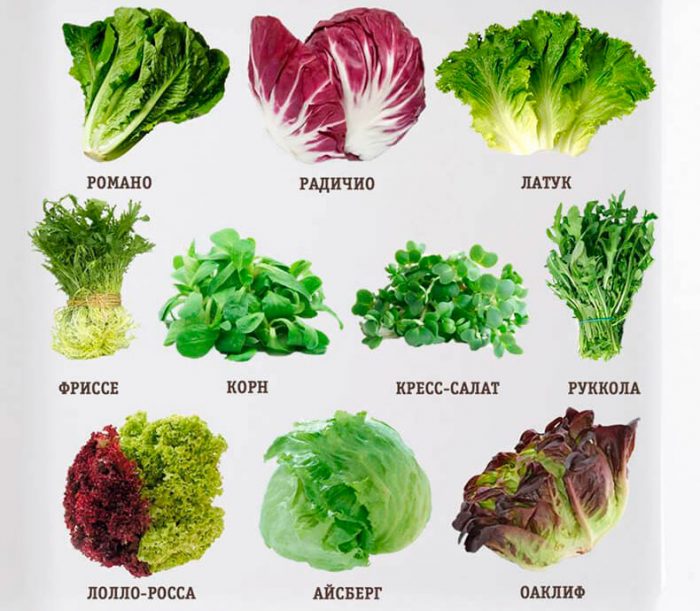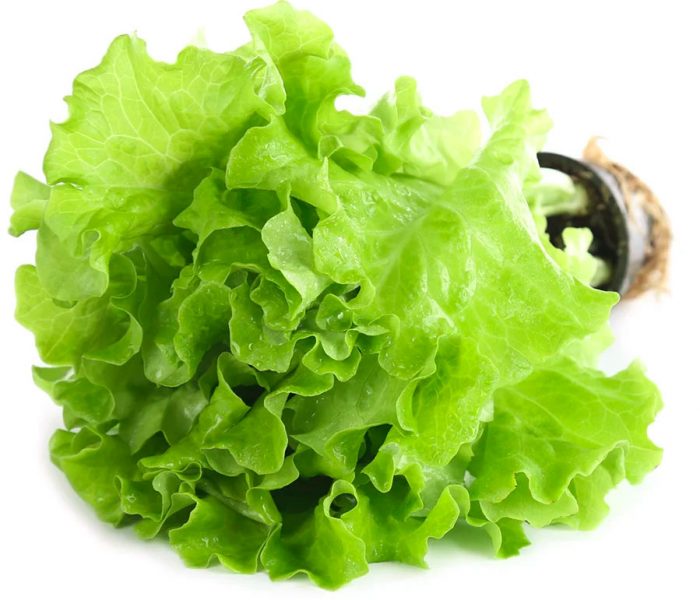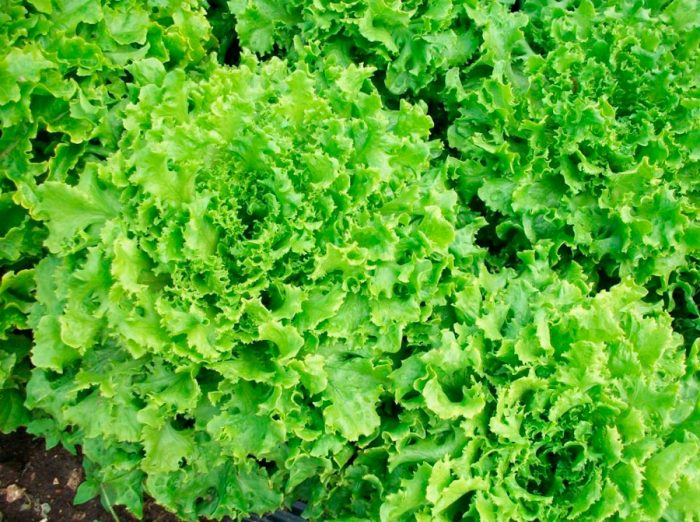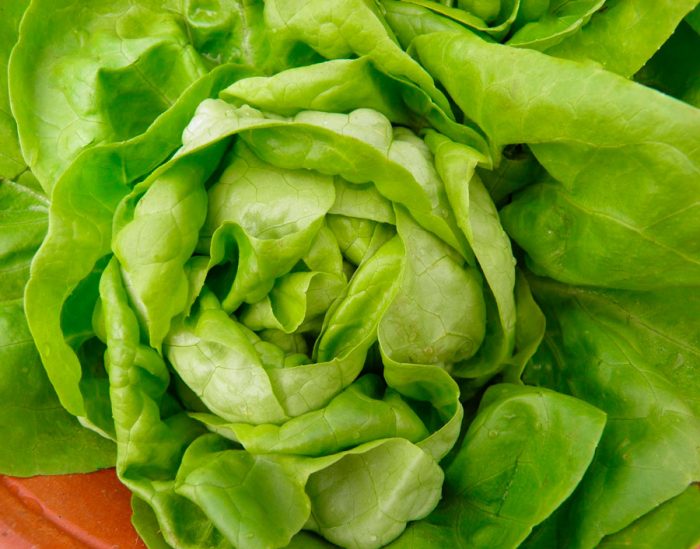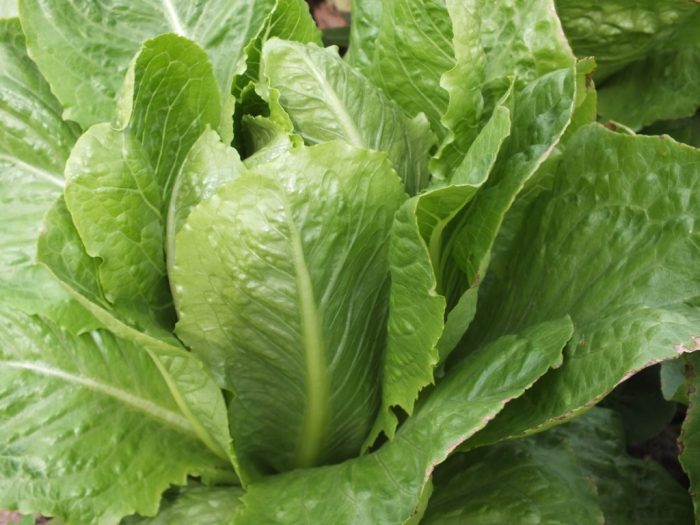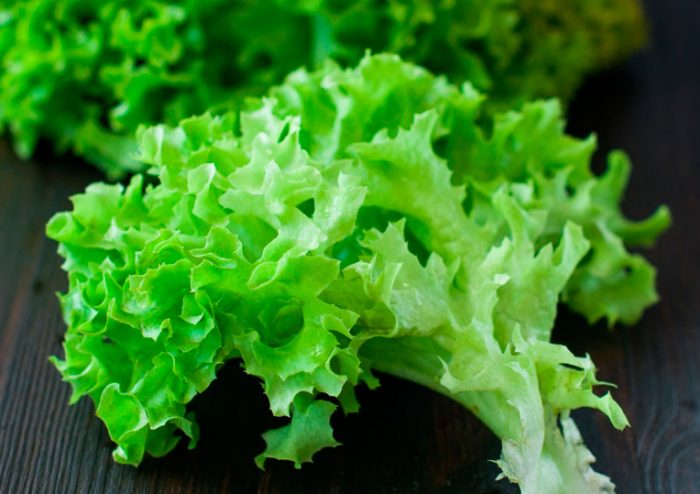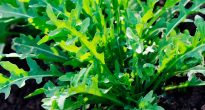A person needs vitamins throughout the year. And in the winter and at the beginning of the spring, he feels their shortage very sharply, since fresh herbs and vegetables from his own garden disappear from the table. In order to avoid a deficiency of vitamins in the body, in the cold season, greens filled with valuable vitamins can be grown in the window or in a greenhouse, for example, watercress, green onions or lettuce. At first glance, this may seem like a very difficult task, but in reality it is far from the case. And with the arrival of spring, such greens can be sown again in the garden.
Content
Brief description of cultivation
- Landing... In open soil, early varieties are sown in April – May, and middle ripening and late-ripening varieties - from April to the second half of June. Even early maturing varieties are suitable for podzimny sowing, which is carried out in the last days of October or the first in November. Sowing of lettuce for seedlings begins in April, while its planting in open soil is carried out in May. If the salad is cultivated indoors, then you can sow it whenever you want.
- Illumination... Needs a lot of sunlight, which can be both bright and diffused.
- Priming... The soil should be fertile, loose, moderately moist and contain a large amount of humus. Loamy, chernozemic or calcareous soil with a pH of 6.0-7.0 is most suitable.
- Watering... On average, lettuce is watered once every 7 days in the evening or morning. As soon as the heads of cabbage begin to form, watering is reduced. On hot days, watering is carried out at night.
- Fertilizer... Does not need additional feeding. All necessary fertilizers are applied to the soil when preparing the site.
- Reproduction... Seeds.
- Harmful insects... Lettuce flies, stem lettuce aphids, white-striped filly and slugs.
- Diseases... White and gray rot, peronosporosis, powdery mildew and viral mosaic.
Features of the salad
The correct name for the herb lettuce is lettuce, it is considered a representative of the genus Lettuce of the Astro family. Such a plant can be an annual, biennial or perennial.The name of this genus was formed from the Latin word lac, which translates as "milk", the fact is that the plant contains milky juice. Lettuce has several varieties: semi-cabbage, leafy, cabbage and Roman (romaine). Each of these varieties is very popular with gardeners in all countries.
First of all, basal leaf plates grow near the lettuce bush, and only then a flowering stem is formed, which is highly branched, its height can vary from 0.6 to 1.2 m.The root rosette is formed from leaf plates of greenish-yellow, less often red ... Large sessile horizontal leaf plates have an obovate shape, a jagged, solid or cut edge, as well as a wrinkled, corrugated, smooth or curly surface. In the headed varieties, the leaf plates are closed, forming a flat-round or rounded head. There are bristles on the seamy surface on the central vein. The inflorescence is a small cylindrical head that has a pitcher-like shape, it consists of small bisexual reed flowers of a pale yellow color, which in turn are collected in large numbers in panicle inflorescences. The fruit is achene.
To date, scientists have not yet established exactly how the salad originated. However, there is an opinion that it originated from the compass lettuce, which naturally occurs in North Africa, Asia Minor, Central Asia, and also in Western and Southern Europe. Man began to cultivate lettuce even before our era. There is evidence that such a plant was grown in the ancient states of Greece, Egypt, China and Rome. Salad has been cultivated in Europe since the 16th century.
Such a culture is resistant to cold weather, as well as moisture and light-requiring. For food, fresh foliage is used, which contains a lot of minerals and vitamins. But as soon as the stem begins to grow, the taste of the leaf plates becomes bitter, and they can no longer be eaten.
Sowing lettuce for seedlings
What time to sow for seedlings
Growing lettuce using seedlings is used in regions where the spring is late and cold, or for an early harvest. In middle latitudes, and even in the Moscow region, the seeds of such a plant can be sown directly into open ground. If the region is located to the north, then it will be safer to grow such a crop through seedlings.
You can sow seeds in protected soil under a film or in boxes. Sowing seeds for seedlings is carried out when 30–35 days remain before transplanting seedlings into open soil. It is recommended to sow pelleted seeds, the fact is that they have a higher germination capacity, and it is even more convenient to sow them. In case you bought simple seeds, then combine them with a little sand.
Sowing rules
First, prepare a suitable potting mix. To do this, mix high-quality humus soil, peat and sand (2: 1: 1). If you have the opportunity and desire, then buy a ready-made earthen mixture, which can be found on the store shelf, the best suited "Vegetable", "Universal" and "Biogrunt". Sowing is recommended to be carried out in containers or boxes, but experienced gardeners advise using pressed peat cubes with a facet of 40-50 mm for this.
Before sowing, the seeds are immersed for 2-3 hours in a solution of potassium manganese of pink color. Then they are evenly distributed on the surface of the substrate, without embedding. If sowing is carried out in a box, then grooves must first be made in the soil mixture, into which the seeds are evenly placed, while they must be buried into the substrate no more than 10 mm. If, as the seedlings grow, you want to cut them out, then the row spacing should be about 50 mm. But you can not dive the seedlings, in this case it is necessary to leave a distance of at least 100 mm between the rows.Crops need abundant watering, which must be done very carefully, then the container is covered with glass or film on top. Experts advise removing the seedlings in a well-lit place with an air temperature of 18 to 21 degrees. The first seedlings may appear after 3-4 days, immediately after that the temperature should be reduced by 3 or 4 degrees, otherwise the plants may begin to stretch.
If the bushes need a pick, then it is carried out after 1 or 2 true leaf plates have formed on them. Seedlings are planted in open soil during the formation of 3 or 4 true leaf plates. But first, they must be hardened for 15 days. To do this, the seedlings are transferred to the street every day, while the duration of such a procedure should be increased gradually. The seedlings will fully harden after being able to stay in the fresh air around the clock. If the salad is grown indoors, then it does not need to be hardened.
Growing lettuce on the windowsill
The windowsill salad can be grown throughout the year. For sowing seeds, you can use 1–2 liter pots or boxes. In spring, they are placed in a well-lit place (a sunny window is perfect). In the cold season, the bushes will need additional illumination; for this, phytolamps or fluorescent lamps are used, as a result, the duration of daylight hours should be increased by 2-3 hours.
The soil mixtures described above are well suited for growing lettuce on the window, but you can also use a substrate consisting of coconut fiber and vermicompost (2: 1). Prepare the seed in the same way as described above. Then take a container, lay a good layer of drainage on its bottom and fill it with wet soil mixture, after which seeds are sown into it to a depth of 0.5-1 centimeter. After the crops are watered, they must be covered with glass (film) from above, and then removed to a dark place. The first seedlings should appear after 3-5 days, immediately after that the shelter is removed, and the container is moved to a well-lit place. It will be possible to tear off foliage for food after 5 to 10 plates are formed on the bushes. If you are going to put the cut leaves for storage, then in no case should you wash them, otherwise rot will form on them.
Watering
When growing on a window, you need to water the salad systematically 1 time in 2-3 days. Particular attention should be paid to watering on hot days, because the drying out of the earthen coma causes more rapid formation of flower arrows, and because of this, the foliage has an unpleasant bitter taste. Seedlings grow well at temperatures from 16 to 20 degrees, but they develop normally on a loggia in the cool (about 6-7 degrees). Such a plant can be harmed not only by cold, but also by excessive heat, as well as low air humidity, in this regard, the bushes must be moistened every day from a sprayer. To moisten and water the salad, use well-settled water at room temperature.
Fertilizer
In order for the salad to grow actively in room conditions, it will need to be fed in a timely manner. To do this, a complex fertilizer in liquid form is introduced into the soil mixture 1 time in 7 days. Remember that this crop can accumulate nitrates; therefore, it is necessary to control the amount of nitrogen introduced into the soil mixture. But it is best to use an organic fertilizer for feeding, for example, a mullein solution (1:10).


Watch this video on YouTube
Planting lettuce outdoors
When to plant
Since lettuce is a frost-resistant crop, sowing seeds can be carried out immediately in the open ground before winter, they do this in the last days of October or the first ones in November.In spring, sowing of early varieties is carried out in April-May, late-ripening and middle-ripening varieties are sown from April to the second half of June. In order to have a delicious fresh salad on your table all season, you can sow it regularly once every 1–1.5 weeks until the second half of August.
Sowing
The area suitable for the cultivation of this plant should be open and well lit. The soil in the selected area should be loose, fertile with the required amount of trace elements and organic matter. The soil should be slightly alkaline or acidic (pH 6.0-7.0). Loamy, black earth, sandy and carbonate soil is well suited for growing lettuce. However, if the soil is heavy and clayey, then lettuce cannot be cultivated on it. Zucchini, cucumbers, early cabbage and potatoes are good predecessors of such a crop, while fertilization had to be applied under them. It is recommended to grow radishes near the site with this plant, all types of cabbage and radish, the fact is that cruciferous fleas are very often harmful to these crops, but they do not tolerate salad. Lettuce can also be grown around crops such as peas, spinach, garden strawberries and tomatoes. It is also recommended to grow this culture near a garden with onions, as it is able to scare away aphids from the bushes. On the same site, lettuce can be cultivated with a break of 2 years.
The preparation of the site for planting or sowing lettuce must be done in advance. To do this, dig it up, while rotted manure or compost is introduced into the soil (10 liters per 1 square meter of the plot). In spring, when you loosen the soil before sowing or planting seedlings, you need to add 1 tsp. potassium sulfate, 1 tbsp. l. superphosphate and 1-2 tbsp. l. spoons of Mortar per 1 square meter of plot. If the soil is acidic, then the solution must be replaced with 1-2 tbsp. l. nitrophosphate, and 0.2 kg of dolomite flour is also added to it per 1 square meter of the site.
Before sowing, the seeds are combined with sand (2: 1), then furrows are made in the moistened soil with a depth of 0.5 to 1 cm with a row spacing of 15 to 20 centimeters. Seedlings appear already at a temperature of 5 degrees, however, at a temperature of 20 degrees and above, seed germination worsens. After the massive appearance of seedlings, they will need to be thinned, while for head varieties the distance between the bushes should be from 10 to 15 centimeters, and for leaf varieties - from 6 to 8 centimeters. Experts advise thinning seedlings in two stages.
When planting seedlings of compact early varieties, they resort to the 25x25 centimeters scheme, but if the plants are large - 35x35 centimeters. Seedlings are planted in moistened soil. After planting, check that the root collar of the bushes is located slightly higher or at the same level with the surface of the site.


Watch this video on YouTube
Outdoor salad care
In order to successfully cultivate lettuce on your site, it is necessary to weed, water it in a timely manner, and also loosen the soil surface near the bushes. It is recommended to loosen the soil every time after rain or watering; during this procedure, all weeds must be removed from the garden.
Watering
When grown in open soil, the bushes are watered regularly, on average, once every 7 days and do it in the evening or morning. When growing head varieties, it is recommended to water them along the rows, but the sprinkling method is better suited to leaf varieties. After the growth of heads of cabbage begins on the bushes, watering must be sharply reduced, otherwise there is a high probability of rot formation on the bushes. On hot days, to prevent the development of necrosis in the salad, experts advise watering it at night. Remember that the frequency of watering is directly dependent on weather conditions.
Fertilizer
When growing leafy varieties, it is enough to add all the necessary fertilizers to it when preparing the soil for planting, and then the bushes will not need additional feeding. However, if the soil is depleted, then the plants should be fed with phosphorus, calcium, nitrogen, potassium and magnesium to obtain crispy salad foliage. Since cabbage varieties grow longer than leafy ones, they should be fertilized 1-2 times throughout the season. It is recommended to feed the bushes with organic matter, namely: a solution of bird droppings (1:20), fermented herbal infusion, biohumus or mullein solution (1:10). As a rule, the plant is fed at the same time as watering.
What to grow after the salad?
In the area where lettuce was previously cultivated, it is recommended to grow tomatoes and peppers next season.
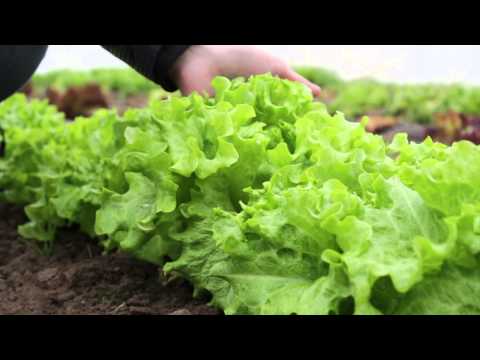

Watch this video on YouTube
Lettuce pests and diseases
Lettuce diseases
The greatest danger to lettuce is represented by diseases such as white and gray rot, peronosporosis, powdery mildew and viral mosaic. Remember that bushes affected by any of the diseases are not allowed to be treated with chemicals, the fact is that in this case, substances dangerous to the human body will accumulate in the foliage of the lettuce.
Gray rot of lettuce
Botrytis fungus is the causative agent of gray rot, which damages foliage and shoots of bushes. On the surface of diseased bushes, necrotic spots of brown color are formed, gradually spreading from the bottom of the bush to the top. This disease develops best in wet and rainy weather. For prevention purposes, it is imperative to adhere to the rules of crop rotation, remove weeds, affected leaf plates from the site in time, and also be sure to clean it of plant residues in the autumn. In addition, you can cultivate varieties that are highly resistant to gray rot, for example: Moscow Greenhouse, Khrustalny or Maisky.
White rot
White rot also damages the aerial parts of the plant. The causative agents of this disease penetrate into the foliage, which lies on the surface of the soil or is very close to it, after which it enters the petioles, and then into the shoots, as a result, watery specks of light color are formed on their surface. On the surface of tissues affected by such rot, a white flocculent plaque of mycelium forms. In order to prevent lettuce from being affected by such a disease, one must remember the rules of crop rotation. As soon as the affected bushes or foliage are found on the site, they must be removed and destroyed. In autumn, the site is cleaned of plant residues or deep plowing is carried out. Remember that it is highly undesirable to cultivate such a plant on heavy acidic soil; you also need to keep the amount of nitrogen in the ground under control.
Peronosporosis
The aerial part of the bush can also be affected by downy mildew (peronosporosis). On the front surface of the diseased foliage, angular or vague spots of almost yellow color are formed, at the same time a bloom of white color appears on the seamy side. As the disease progresses, the specks turn brown, and the affected foliage dries. The disease develops most actively when the air humidity is very high, and if there is dripping moisture. For prophylaxis, only healthy seed is used for sowing, and the rules of crop rotation must also be strictly followed. If it is assumed that the seeds may be contaminated, then it is recommended to treat them with a solution of TMTD (80%) before sowing. Do not allow thickening of the plantings, for this, be sure to adhere to the seeding scheme indicated above.
Edge burn
A marginal burn is a rot, which gradually spreads to the entire bush, which leads to its death. This disease begins to develop due to the fact that there are a lot of nutrients in the soil.For the purpose of prevention, it is necessary to remember about the alternation of crops on the site, correctly apply fertilizers to the soil (especially nitrogen), water the bushes in a timely manner, remove and burn diseased plants from the site immediately after they are found, and clean it of plant residues in the fall.
Powdery mildew
Powdery mildew can infect heads of cabbage, shoots and foliage of this culture. In the affected bush, development and growth becomes slower, and a powdery coating of white color forms on its surface. Most of all, this disease damages the testes of a given plant during flowering and seed ripening. It develops most actively with sharp changes in temperature at night and during the day. For prevention purposes, it is necessary to adhere to the rules of crop rotation, cut off the affected foliage and heads of cabbage in time, and at the end of the growing season, it is imperative to remove plant residues from the site.
Lettuce pests
The greatest danger to such a culture is the salad fly, stem salad aphid, white-striped filly and slugs.
Lettuce fly
The lettuce fly has a length of about 0.7–0.8 cm. The males have a velvet black back, the females have wide-set red eyes, and they are painted in ash-gray color. This insect injures the testes of lettuce, and its larvae feed on the seeds. Affected inflorescences become dark and do not open. After the larvae are seen on the bushes, they must be sprayed with a solution of Phosphamide, while strictly following the instructions. Inflorescences affected by such a fly must be removed from the site and burned.
Stem salad aphid
Stem salad aphid is very widespread. The body length of wingless insects varies from 1 to 2.5 millimeters, and in winged insects it is about 2 millimeters. The color of such a sucking insect can be dark gray or greenish-gray, while they can settle on shoots, flowers and foliage. The parts of the plant affected by insects lose their color, curl, while the lower leaf plates have a mosaic color. As a result, the bushes have a lag in development and growth. In autumn, such a pest moves to currants. In order to prevent and combat aphids, it is recommended to spray the bushes with infusion of dandelion foliage, onion husks or potato tops.
White-striped, or slender filly
A slender or white-striped filly, which is a polyphagous pest of locusts, can also harm the salad. The length of the insect is 1.3–2.1 cm; it can be colored green, yellowish-gray or brown. Such a gnawing pest can harm the shoots and foliage of this culture. For prevention purposes, the site must be cleared of perennial weeds, especially wheatgrass. When the entire salad harvest is harvested, the soil surface in the garden bed and plant residues must be treated with a solution of Karbofos, the site is cleaned the next day.
Naked slugs
Also, often naked slugs settle on the delicate foliage of such a plant, which are able to make large holes in it. Such pests are most active in the evening and at night, while in the daytime they hide in cool dampness in the shade of bushes or in foliage. In order to clear the area from such a pest, you will need to make traps. To do this, jars filled with beer are dug in on the site in several places. Slugs creep on its smell, at this time they need to be collected and destroyed.
Types and varieties of salad
As mentioned above, it is more correct to call a salad lettuce, it is a species of the genus lettuce. In this regard, if it says "types of lettuce", then this is most likely due to the fact that below we will talk about one of the varieties of such a plant, for example: semi-cabbage, leaf, cabbage and Roman (romaine).When harvesting, the bush itself is not damaged, only its leaf plates are ripped off, which can be carved (oaky or dissected) or large solid (fan-shaped, oblong and triangular).
Leaf salad
- Critset... This early variety is resistant to heat and is intended for outdoor and greenhouse cultivation. Ripening period from 40 to 45 days. Its thin leaf plates have a greenish color with a yellowish tinge. The average weight of one bush is 0.25 kg.
- Emerald... This medium-ripening variety is resistant to stemming and heat. Very tasty dark green obovate leaf plates have a fine bubbly surface. The mass of one bush is about 60 grams, the variety differs in that it does not grow old for a long time.
- Ballet... The variety is resistant to shooting and lack of light; in spring and winter it is recommended to grow it in greenhouses, and in summer - in the open. Crispy large leaf plates of dark green color have a fan-shaped shape with a scalloped edge. The weight of one bush varies from 0.3 to 0.6 kg.
- Fun... The medium-ripening variety is resistant to stalking and diseases. Large deep red leaf blades have an oily texture. The average weight of a bush is about 0.2 kg.
- A sandwich... The variety is early maturing. Crispy and delicate greenish leaf plates have a wavy edge. On average, one plant weighs 0.18 kg. This variety is often used in salads and sandwiches.
- Moscow greenhouse... Such an early ripening variety is intended for cultivation in greenhouses, the duration of its ripening is from 30 to 40 days. The length of large delicate juicy leaf plates of a sweetish taste is about 18 centimeters, they are colored greenish. The average weight of the bush is 0.1–0.2 kg. This variety is good because its foliage remains fresh for a long time and does not have a bitter taste.
In addition to such varieties, the following are still widely cultivated: Tornado, Roblen, Dubachek, Dubrava, Lollo Rossa, Lollo San, Lollo Biondo, Lakomka, Royal, Kitezh, Crunchy vitamin, etc.


Watch this video on YouTube
Half-cabbage salad
Semi-cabbage varieties outwardly have a great similarity to leafy ones, but their foliage is collected in small unclosed heads of cabbage. Most popular varieties:
- Odessa kucheryavets... The medium ripening variety is resistant to flowering. A loose rosette reaches 24 to 32 centimeters in diameter and weighs about 0.2 kg on average. Delicious crunchy green leaf plates are fan-shaped and have a corrugated edge.
- Eurydice... The medium ripening variety has a compact semi-raised rosette, which is up to 35 centimeters high, and up to 33 centimeters across. The delicious crunchy large leafy plates are dark green and bubbly with a wavy edge.
- Festival... The ripening period of such a mid-ripening variety is about 70 days. Its large rounded rosette weighs about 150 grams and includes greenish juicy and very tasty leaf plates.
- Berlin yellow... The medium ripening variety has a rounded rosette, which weighs about 0.2 kg and reaches about 30 centimeters in diameter. The rosette includes pale yellow leaf plates.
- Kucheryavets Gribovsky... The mid-early variety is resistant to disease. A loose socket weighs between 0.25 and 0.47 kg. Juicy, crispy, very tasty, large, rich green foliage has a fan-shaped shape with a finely corrugated edge.
Still very widely cultivated are such varieties as: Kado, Stone Heads, Grand Rapids, Azart, Admiral, etc.
Head salad
Outwardly, cabbage varieties are similar to dense heads of white cabbage.The scientific name for this variety is "creepsheads", which translates as "crispy heads", this is due to the fact that the foliage of these varieties is very crispy. This variety was born in the twenties of the 20th century thanks to farmers in California.
- Iceberg... The variety has a high yield and resistance to shooting. The duration of its maturation is 75–90 days. Delicious bubbly leaf plates have a wavy edge and stay fresh for a long time. Average weight of cabbages is from 0.3 to 0.6 kg.
- Great Lakes... This late high-yielding crunchy variety is resistant to flowers and burns. The ripening period is about 85 days. A large round head of cabbage has a closed top, dark green leaves are similar in shape to oak leaves.
- Attraction... Productive variety of medium ripening period. The high rosette consists of oily greenish triangular leaf plates, slightly wavy along the edge. One head weighs on average about 0.23-0.26 kg.
- Four seasons... This medium-ripening variety is intended for cultivation both in protected and in open ground, the heads are of average size. The inner leaf plates are greenish-yellow, and the outer ones are bronze-red. Delicious leafy plates are oily and tender.
- Design... The medium late high-yielding variety is resistant to stem stemming. On average, the heads reach about 0.2 m in diameter. Very tasty crispy green leaf plates of medium size are bubbly and round-flat in shape, along the edge they are wavy with small cuts in the upper part. The average weight of the head is 0.5–0.65 kg.
Among gardeners, the following varieties are very popular: Khvorost, Petrovich, Argentinas, Papiro, Khrustalny, Yadkho, Kucheryavets Semko, Buru, Umbrinas, Platinas, Opal, Afitsion, etc.
Roman salad, or romaine salad
An elongated head of cabbage is formed in romaine or roman lettuce. The root of such a plant is represented by a branched rod, the upper foliage of the head has a bright green color, and the inner one is pale yellow. Popular varieties:
- Paris green... The medium ripening variety is resistant to cold and heat. From the moment the seedlings appear, the head of cabbage is formed after 84–90 days. A not very dense head reaches 32–39 centimeters in diameter, and it weighs 0.2–0.3 kg. Sweetish juicy and crunchy leaf plates of a dark green color with a bluish tint are up to 13 centimeters wide and about 27 centimeters long.
- Legend... The variety appeared relatively recently, it is resistant to downy mildew, arrowheading and edge burn. The compact, medium-sized green head consists of bubbly foliage.
- Remus... A productive late variety with a loose, closed head of elongated-oval shape, the average weight of which is about 0.43 kg. Bubbly dense, medium-sized leaf plates are dark green in color and elliptical.
- Balloon... This late variety forms a loose oval-elongated head, reaching about 12 centimeters in diameter, its height up to 25 centimeters, and an average weight of 0.3–0.35 kg. The foliage is greenish.
- Roman... The medium-ripening variety is resistant to bacteriosis and septoria. The length of obovate elongated leaf plates is about 26 centimeters, they have a barely discernible fine-celled, weakly fibrous structure and a slightly ragged toothed edge. The average density of oval-elongated heads reaches up to 14 centimeters across, their height is about 25 centimeters, and they weigh 0.29-0.35 kg.
The following varieties are also cultivated: Stanislav, Vyacheslav, Sukrain, Dandy, Veradarts, Sovsky, etc.
All lettuce varieties are still divided according to the ripening period into late-ripening, mid-ripening, early-ripening and early-ripening. The earliest variety Lue Leaf: This lettuce matures in 25 days. Duration of ripening of varieties Kholodok, Lollo Rossa, Robin, Moskovsky greenhouse and Dubachek is about 35 days.The average ripening period of Vitaminny, Green Peak, Sunshine varieties is formed in 45 days, they allow you to remove two crops from the site during one season. Varieties Rubin and Gurman are medium late, they mature for about 55 days. Such varieties as Green Manul, Rhapsody, Odessa Kucheryavets, Vitaminny and Moscow Greenhouse do not have bitterness.


Watch this video on YouTube
Properties of lettuce: harm and benefit
The healing properties of salad
The salad contains a large amount of folic acid, which is involved in metabolic processes in the body, as well as in the activity of the nervous system and in hematopoiesis. Only spinach contains more salt than salad. It contains trace elements such as zinc, molybdenum, titanium, iodine, boron, copper, cobalt and manganese. The foliage also contains potassium, calcium, silicon, iron, magnesium, phosphorus and sulfur, which plays the role of an oxidizing agent and, together with silicon and phosphorus, keeps the epidermis and tendons in good condition, and also promotes rapid hair growth. The foliage also contains vitamins C and A, as well as resins, alkaloids and bitterness, they are distinguished by a calming, expectorant and diuretic effect.
Iron plays a very important role in the human body, in this regard, it is extremely important that there is a systematic replenishment of its reserves. And the salad contains quite a lot of iron. The accumulation of this element occurs in the spleen and liver, and then, if necessary, the body uses it, for example, with a large blood loss to form red blood cells. The plant also contains magnesium, which stimulates the nerves, muscles and brain. Organic salts play the role of building blocks for new lung tissue cells and nerve cells, and they also improve blood circulation.
Salad is used as a dietary product, which is recommended for diabetics and people leading a sedentary lifestyle, because it has a sedative effect and helps to improve digestion. It is also recommended to eat it for people of age who have suffered a serious illness.
Infusion of lettuce seeds increases lactation, and homeopathic preparations based on lettuce juice are used for heart diseases. The infusion is also prepared from fresh foliage, it helps with liver diseases, insomnia, chronic gastritis and hypertension. Even regular use of lettuce greens normalizes fat metabolism, lowers blood cholesterol levels, which is the prevention of diseases such as atherosclerosis, obesity and hypertension.
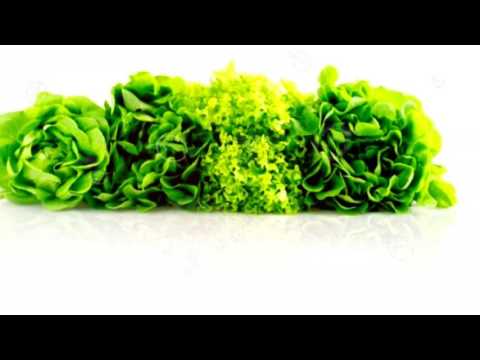

Watch this video on YouTube
Contraindications
Lettuce should not be eaten by people suffering from urolithiasis, gout, acute and chronic colitis, enteritis and other intestinal diseases accompanied by dyspepsia. It is also worth refraining from its use in acute gastritis, gastric ulcer and duodenal ulcer, phosphaturia and oxaluria. If you eat a lot of lettuce, then this will cause increased gas production, which is extremely undesirable for tuberculosis and asthma.


